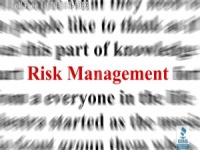Posts Tagged ‘document management software’
Developing and Managing the Lifecycle of Records
 Importance of Records Management
Importance of Records Management
Records management systems are typically developed in one of two ways. First, there’s the approach most companies take. They start with a very basic filing system that serves the purpose of managing a small collection of records. Often, an entry level staff member with no records management background is tasked with creating the filing system in an attempt to reduce the labor costs associated with the project.
These individuals will use a combination of whatever methods and tools they are most familiar with (top tab folders, alphabetical filing, handwritten labels, basic color coding, etc). As the records continue to accumulate, the filing system becomes more unwieldy and error prone. Things get lost or misfiled, records that should have been discarded long ago keep clogging up the system, and finding a file quickly becomes difficult.
The other approach is to carefully design a filing system that accounts for how files and other information will be managed throughout their lifecycle, regardless of how extensive the records become. Fortunately, it’s never too late to switch from an outdated and inefficient filing system to an information management solution that really meets your company’s needs.
Information Compliance Risks
From security to retention, federal and state regulatory agencies have very strict rules for how businesses manage their information and records. Missing documents, incomplete records, or unsecured files are a big liability. Implementing a records management program with properly designed records management software establishes and enforces internal business guidelines that meet government standards. For example, you can set up record retention and disposition schedules to eliminate records that are past their retention date. These practices increase your level of compliance and reduce your risk of government fines and penalties in the event of an audit.
 Advanced Technology Reduces Cost
Advanced Technology Reduces Cost
Various forms of records management technologies will support best practices for managing the lifecycle of records. Technologies like file labeling software, barcode scanning and RFID (Radio Frequency Identification) tagging allows you to track and manage a large number of records quickly and accurately. Paired with the right software solution, you can create a seamless records management system that enhances your ability to create, label, review, inventory, transfer, and dispose of records efficiently. Records management software cuts down on the time you spend looking for (or recreating) missing records. Records management software has advanced security features allowing you to set and restrict access to appropriate personnel. Since a comprehensive audit trail is built in to the technology, you have a complete history showing when each record was create and accessed throughout its lifecycle.
Assessing Your Records and Information Management System
Need help assessing your records and information management system? Southwest Solutions Group provides a free 30 minute phone assessment of your filing system. Call today at 1-800-803-1083 for your free assessment or contact us by email at info@ssgims.com. We have the knowledge, expertise, and products to improve your records management process, no matter what stage it is in!
Click here to see a list of our records management consulting services.
10 Steps to Converting Electronic Medical Records (EMR)
Why Electronic Medical Records (EMR)?
 Healthcare providers all across the U.S. are migrating their medical charts to Electronic Medical Records (EMR) to increase record accuracy, decrease waste, eliminate costly storage space, and improve patient care. Hospitals are also seeking to take advantage of government incentives under the American Recovery and Reinvestment Act (ARRA). Right now, everyone is focusing on the “carrot” of payments they can receive by implementing EMR. But the “stick” comes out in 2015, when hospitals that don’t meet federal guidelines for paperless records may be penalized with reduced Medicare reimbursements.
Healthcare providers all across the U.S. are migrating their medical charts to Electronic Medical Records (EMR) to increase record accuracy, decrease waste, eliminate costly storage space, and improve patient care. Hospitals are also seeking to take advantage of government incentives under the American Recovery and Reinvestment Act (ARRA). Right now, everyone is focusing on the “carrot” of payments they can receive by implementing EMR. But the “stick” comes out in 2015, when hospitals that don’t meet federal guidelines for paperless records may be penalized with reduced Medicare reimbursements.
What’s Holding Healthcare Organizations Back from Using EMR?
 The new government rules to EMR are confusing and picking the right document imaging software system is challenging. Plus, there is significant expense and disruption involved when you make such a big change in how medical records are handled. It’s just not feasible to expect hospitals to do this on their own without expert guidance from information management professionals. Software vendors are happy to sell you imaging hardware and advise you on how to install image software on your computer network; but that doesn’t help with the real-life obstacles you will face in converting your medical file charts to electronic images that can be located when you need them.
The new government rules to EMR are confusing and picking the right document imaging software system is challenging. Plus, there is significant expense and disruption involved when you make such a big change in how medical records are handled. It’s just not feasible to expect hospitals to do this on their own without expert guidance from information management professionals. Software vendors are happy to sell you imaging hardware and advise you on how to install image software on your computer network; but that doesn’t help with the real-life obstacles you will face in converting your medical file charts to electronic images that can be located when you need them.
 Getting Help Converting Electronic Medical Records
Getting Help Converting Electronic Medical Records
Converting medical records to a document imaging system takes the help of a qualified information management specialist who has experience in the EMR imaging process and government requirements. A qualified information management specialist will help you understand the process and avoid common mistakes that can set your organization back. For example, EMR compatible medical records scanning involves more than simply scanning records and uploading a pdf of a patient’s chart into a database. If you don’t have federally approved quality controls in place, you may end up with a bunch of electronic records that are not considered true originals. That’s an excuse Medicare can use to deny payment. Below is an overview of ten steps to converting your medical documents to Electronic Medical Records.
10 Steps to Converting Your Paper Medical Records to EMR
1. Survey – Review your current filing system to discover the best documents to image 2. Plan – Develop a master plan to map and document every step of the conversion process including establishing your document indexing requirements 3. Pack & Manifest – Box and label medical charts/records to be imaged so they can be tracked throughout the conversion process 4. Secure Transportation – Ship record boxes with documents to be scanned and imaged via a bonded courier directly to a secure image conversion facility 5. Validate Receipt – Have the image conversion facility provide receipt of shipment and confirmation documentation of all documents are present 6. Prep & Scanning – The image conversion contractor should prep documents, removing staples and repairing any damaged records before scanning documents with a high quality production scanners to ensure a high quality, clear and complete scan of each file 7. Indexing – Document The image conversion contractor should index documents according to your specifications established in Step Two 8. Quality Control – Request a sampling of imaged documents to ensure scanning and indexing accuracy of each record 9. Output – Upload the scanned records into your EMR software system or supply on CD/DVD if requested 10. Store or Shred – Provide storage, shredding, or secure shipping instructions for paper records




